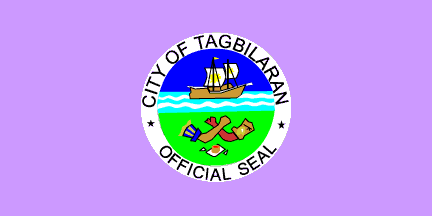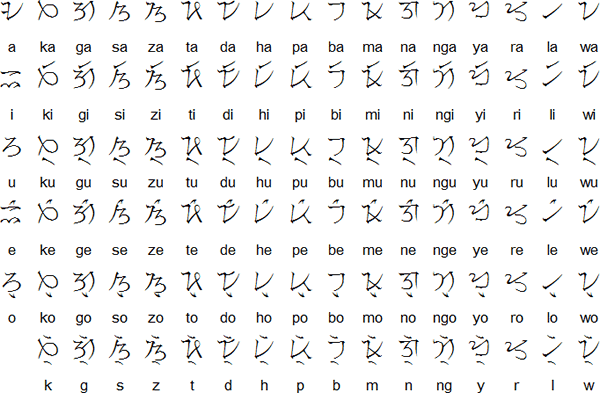
.jpg)
LAaG SA ISLA
"The otherside of the islanders in Chocolandia..."
Browsing? Use Google Chrome
Popular culture x Pop culture!
(mobile browsing in desktop view)
feature Island Life (Tourism, F-Culture, Pop culture)
A NOTES-BLOG + SOCIAL FAN PAGE + HOMEPAGE
Una pagina social 社交頁面 소셜 페이지
A social page x homepage of "ROViC" Dedicated to fellow local islanders and international community wonderers!
LAaG SA ISLA
"The otherside of the islanders in Chocolandia..."
Browsing? Use Google Chrome
Popular culture x Pop culture!
(mobile browsing in desktop view)
feature Island Life (Tourism, F-Culture, Pop culture)
A NOTES-BLOG + SOCIAL FAN PAGE + HOMEPAGE
Una pagina social 社交頁面 소셜 페이지
A social page x homepage of "ROViC" Dedicated to fellow local islanders and international community wonderers!
↓
↓
↓



TAGBILARAN CITY
Tagbilaran City, Fact, History, Island Natives and the new locals, native local dialects
Tagbilaran is a city in the Visayas group of islands in the Philippines. It is the seat and component city of the island province of Bohol with a population of 105,051 as of 2015 census. In the 2016 electoral roll, it had 59,949 registered voters. Encompassing a land area of 32.7 km2 (12.6 sq mi), with a coastline of 13 km (8.1 mi) on the southwestern part of the island, the city shares its boundaries with the towns of Cortes, Corella, and Baclayon.
Tagbilaran is the principal gateway to Bohol, 630 km (390 mi) southeast of the national capital of Manila and 72 km (45 mi) south of the regional capital, Cebu City. (wikipedia)
Early History
The people of Bohol are said to be the descendants of a group of inhabitants
who settled in the Philippines called pintados or "tattooed ones." Boholanos
already had a culture of their own as evidenced by artifacts unearthed at
Mansasa, Tagbilaran, and in Dauis and Panglao.
Historic events
One of the most important events in Philippine history (immortalized on canvas by the famous Filipino painter Juan Luna) was the blood compact between Datu Sikatuna, a local native chieftain, and Captain Miguel López de Legazpi, the Spanish explorer and colonizer. It took place in the coast of Bool, now a district of Tagbilaran, on 16 March 1565, a day after Legazpi and his crew of conquistadores on four ships chanced upon the shores of Bool during their trip to the province of Butuan from Camiguin Island because of strong southwest monsoon winds and low tide.
On that day, 16 March 1565, Legazpi with Fray Andres de Urdaneta and some of his crew set foot on land for an audience with the local chieftain Sikatuna. The two bands of different race and creed met a few hundred meters from the beach and, after a few pleasantries, the Basque seafarer and the chieftain of Bohol sealed and strengthened their treaty of friendship in a historic blood compact. Sikatuna and Legazpi each made a cut on the left arm and collected the drop of blood into a single vessel mixed with wine. A marker now stands on the spot where Sikatuna and Legaspi allegedly sealed that famous compact.[a] To honor this treaty of friendship, president Elpidio Quirino established the "Order of Sikatuna" in 1953, a presidential award and decoration conferred upon visiting dignitaries. (wikipedia)
Symbols of Tagbilaran
Flag: Tagbilaran Flag (left side image)/ Hymn: Tagbilaran Hymn/ Dance: Kuradang/ Bird: Tailor bird (Tamsi)/ Fish: Rabbitfish (Danggit)/ Flower: Bougainvillea/ Tree: Acacia/ Plant: Golden Duranta
.
People
Aside from the native Filipno Austronesian Cebuano (boholano) speaking islanders, many of the international migrant communities settled and lived in the island and made added to the list of locals. [composes of some north american-filipino (american, canadian, mexican), earopean-filipino (spanish, german/ british/ italian+), asian-filipino (chinese, japanese, korean, indians, southeast-asians, honkong-chinese+) and Oceanic-filipino (australian, new zealander+)
The city composes of 15 districts or barangays.
Modern Day Tagbilaranon (City's natives and Language / Dialects)
The present day island natives or locals are called Boholano-Tagbilaranon and majprity speaks "binisaya" Austronesian Cebuano [Boholano/ kana] and Austronesian Cebuano Boholano/ binol-anon [bol-anon] (formerly malayo-polynesian language group).
Spanish-Bisaya [bisayan with spanish] is the second language, then Austronesian-Tagalog [Filipino / Palau], Chinese and English language speaking locals are also common in the community.
Popular Landmark
The popular landmarks are located in the downtown and uptown part of the city districts such as (shopping malls, superstores, parks, museum, resorts/convention centers+).
Gallery (Popular Architectural Structures)
Gallery (Parks and Shrine)
Gallery (Hotel, Inn, Resorts and Convention Centers, Drive Thru+
Religion and Culture
The island is dominiated by Christian Roman Cathoilc and celebrates with big events annually every 1st day of May in honor to ithe city's Patron Saint from traditional Fiestas (Festivals) started with a holy mass at the church, colorful decorations along the streets, colorful street dancing, preparing great foods, various musical activities, merrymaking, beauty pageant, sports activities, open venue live bands/concerts, disco parties "skies the limit" and more...
St. Joseph Cathedral
Fiesta / Festivals
'Saulog-Tagbilaran Festival is a celebration every 20 April to 2 May. This includes street-dancing, fluvial procession, nightly activities,novena masses and beauty pageant. Tagbilaranon families invite relatives and friends for a lunch or dinner during desperas (visper) and katumanan (grand feast day 1 May)
.
The Sandugo Festival is an annual celebration in Tagbilaran in commemoration of the blood compact between Miguel López de Legazpiand Datu Sikatuna in March 1565. The festival is celebrated every July to coincide with the month-long activities celebrating the city's Charter Day on 1 July and the Province's (Bohol) Day on 22 July. (wikipedia).
Saullog Festival
Bohol Sandugo Festival
Tourism
The city is a start-off point to Bohol province's attractions: the Chocolate Hills, tarsiers, white sandy beaches, dive spots, heritage sites and old stone churches. Home to several hotels, resorts, and restaurants, the city has recently become a venue for national conventions and gatherings.
Gallery
Transportations
Tagbilaran's land network consists of sealed and unsealed roads. Local transport plying the routes within the city are tricycles, multicabs, taxis, and jeepneys. Buses, taxis and vans are usually hired for out-of-town travel. The Integrated Bus Terminal (IBT) located in the city district of Dao serves as the terminal point for public transport vehicles serving the inter-city routes within the province and also serves as the embarkation point for passengers taking the Pan-Philippine Highway (AH26) bus route from Tagbilaran to Metro Manila. There is also a long-distance bus station within Cogon market.
The city is linked by sea to the major port cities in the Visayas Islands and Mindanao, which of major commercial importance is its link to the regional capital of Cebu City. A fastcraft ferry ride to Cebu City takes approximately 2 hours depending on weather and sea conditions. The route is served by Ocean Jet, Weesam Express and SuperCat several times daily.
Tagbilaran Airport serves as the principal gateway airport to the city and to the rest of the province. Airlines using the airport serve only the Tagbilaran-Manila route. The route is served by Cebu Pacific Air, PAL Express, AirAsia Zest and Tigerair Philippines using Airbus A319and Airbus A320 planes. Travel time is approximately 1h:15.
.









































